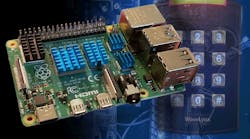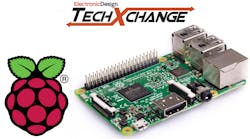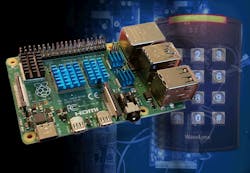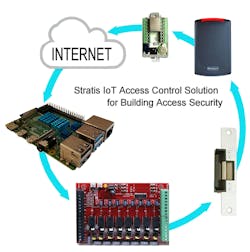Applying a Tiny Solution to a Massive Problem in Access Control
What you’ll learn:
- How the Raspberry Pi can be used within the access control and building security industries.
- Overview of what constitutes a good solution for building access control.
- A glimpse into how Pi was used in a multi-dwelling networking solution.
In the distant past, when developing a Zigbee-based home Smart Socket smart grid, I reviewed many single-board computers (SBCs) with the idea of finding the lowest-possible-cost solution with the highest integrated and innovative technology. SBCs come in all sizes and costs, but in terms of versatility and price, I couldn’t find one that beats the Raspberry Pi.
Looking back at my hardware-developing period, I wish I had known more about this tiny computer. Years have since passed, and I was eventually introduced to the Raspberry Pi 4 as an engineer working on RealPage’s Smart Building team. My preference for the Pi stems from my drive to find a networking solution for the many boxes of manufactured Zigbee smart sockets stuck in my storage closet.
This tiny SBC isn’t just a tool for hobbyists and educators; it’s also a reliable and versatile CPU employed in many industrial and commercial applications, including access control (Fig. 1). Using such a unique solution for integrated access control isn’t a novel idea. Many DIY projects available online take advantage of the Raspberry Pi computer to control door readers and radio-frequency identification (RFID) scanners.
Leveraging Pi for Access Control in a Multi-Dwelling Community
The Pi’s versatility makes it a valuable tool for creating cost-effective solutions in residential embedded applications. With a bit of imagination and programming skills, you can apply this small computer to various tasks. This is where Chirp and the Chirp Access Panel technology, another RealPage Smart Building solution, enter the picture.
Chirp tackled a significant issue with a simple solution. Managing access in multi-dwelling communities, especially from a security perspective, is a challenge often encountered in upscale apartment properties.
One might assume that a complex computer network with advanced AI capabilities would be necessary for such a massive undertaking. However, Chirp took a different approach. By incorporating a Raspberry Pi into the equation, they addressed all of the network requirements for controlling access across the property at a lower cost.
Access control is an evolving technology dating back to the introduction of brass keys for door security. Technology is slowly changing as new methods for controlling building access are implemented. Voice assistant integration is one innovative way of applying existing technology to a fundamental task of access security.
The use of the Raspberry Pi will eventually change to meet the new entrant into access control—that of artificial intelligence and voice assist. While these two technology applications aren’t widely employed in controlling building access, their potential would enhance building security. The future of access control and AI can be seen in the push to apply AI to all personal wear devices. Innovative companies look to replace the smartphone as the item of choice for interacting with the consumer and, by default, the tenant’s environment.
Raspberry Pi’s Networking Versatility
The Raspberry Pi, with its built-in Wi-Fi and Bluetooth support, plus four USB ports and one Ethernet connection, can easily be a conduit for access commands to the many access points within an apartment building. Its versatility is found in its ability to host different operating systems (OS) and the multiple options available for sensor/device interfacing through its general-purpose input/output (GPIO) ports.
Such GPIO connections can be configured to trigger external tasks. It’s this very ability that RealPage and Chirp capitalized when designing an access control system.
Using the Raspberry Pi 4B in access control does have its limitations. As more entry points are added to the solution, the limitations of its general-purpose input/output (GPIO) interface become evident.
The Pi can control 26 entry/exit points in a building through its GPIO header connection. Since most entry points in a residential apartment building are on the first floor, the current 16-door application of the Pi is within its GPIO capacity. However, multiple buildings require individual Raspberry Pi computers.
For large-spread commercial building security, 26 access points may not be enough, necessitating an additional add-on interface module such as the Raspberry Pi Pico Board or adding more actual Pi computers. This is offset by the low cost of purchasing Pi computers.
In the case of the Stratis Access Control system, the SBC connects to a voltage relay board manufactured by a Light Safety Power (LSP) manufacturer. Figure 2 displays a typical interfacing of the Raspberry Pi to a relay board.
Key Factors for Pinpointing the Right Access Control System
When determining an access control solution, top considerations include:
- Cost: Access control systems depend extensively on available technology. Technology ages, and thus legacy systems have become unsustainable due to discontinued parts or lack of upgraded functions. Because the product lifecycle ends and products are no longer manufactured, determining the best system fit may not be the best option. Look for solutions that can be upgraded through software downloads without incurring additional component costs and to product companies that are in for the long haul.
- Sustainability: Any access solution needs to be able to accept different manufactured products and should have the capability to assimilate existing technologies. Integration is key. Products or systems that are unable to integrate eventually find their way into ancient history books.
- Innovation: This category plays a significant role in sustainability since leading-edge technology solutions typically are flexible in their application. However, even old technology can be applied in new, innovative ways, thus maintaining sustainability. For example, early adapted computer languages that are open source have evolved into popular solutions used globally. Access control systems that don’t evolve or innovate in their application ultimately lose market share and drive. That impacts sustainability.
- Product availability: How developed is the distribution channel of a solution offering? Backordering products for project completion creates a lack of confidence in the solution being offered. Supply and demand play a significant role in the next point—market acceptance.
- Market acceptance: The access control industry is still young and evolving as new methodologies are implemented into the market. Being first doesn’t necessarily mean market dominance. Domination of a market is a byproduct of product consumption. Because of this, consumer usage tends to chart the fate of new products and solutions.
- Reliability: Electronics in today’s world are becoming increasingly “non-repairable.” In the past, PCB components were replaced, and the board was refurbished. Today, these same boards are merely being replaced with another one. The low cost of electronic devices encourages such a trend. Access control systems are no exception. Hence, there’s a need to work with companies that are reputable and stand by their products to minimize parts replacements.
- Compliance: Access control solutions must comply with applicable regulations and industry standards. UL294 compliance standard is designed to assess the performance, construction, and operation of the access control devices and systems. In addition, local ordinances may require fire code compliance of the control system for Fail Safe/Fail Secure requirements.
Apartment building security is essential for the well-being and safety of tenants and staff. Using a reliable access control solution provided by a reputable company that can sustain and support such deployments is paramount to successful project completion and customer satisfaction.
As building managers and owners become more security-conscious, the deployment of access control technologies becomes the standard industry practice. The Raspberry Pi, while being a simple solution to a complex problem of access control, is a viable option as a controller and network implementation.
Read more articles in the TechXchange: Raspberry Pi.




